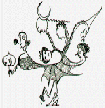 |
ANTIQUE BOXES
at the Sign of the Hygra
2 Middleton Road
London E8 4BL
Tel: 00 44 (0)20 7254 7074
email: boxes@hygra.com |
Antique Boxes in English Society
1760 -1900
by ANTIGONE
Writing Boxes |
|
| News
| Buying
| Contact
us | Online
History of boxes | The
Schiffer Book | Advanced
Search |
| A Very Fine Writing Box Veneered with
Ebony and Inlaid with metal and Abalone shell by Hausburg of Liverpool Circa
1850. |
A very fine Victorian writing box
inlaid with metal and mother of pearl and having calligraphy tools
The box features:
Working lock and key
Secret drawers
mother of pearl inlay
White metal countersunk handles
Calligraphy tools
It measures 15 inches wide by 10
inches deep and it is inches 5.5 high: 38 cm wide by
25.5cm deep by 14cm
high.
Larger versions of the images
are available by clicking on them.
|
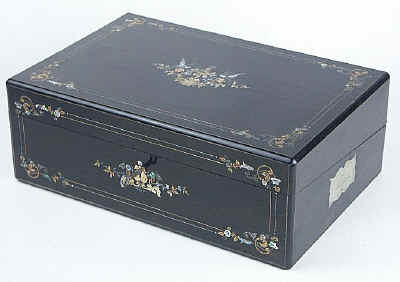
|
|
|
|
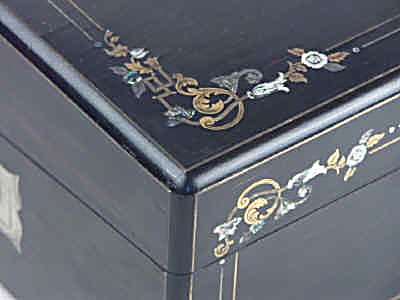
|
The detailing is impeccable. The
ebony is inlaid with metal and mother of pearl depicting natural
flower forms. The whole box is edged with a solid ebony filet.
The ebony veneers are saw-cut. Ebony
is a hard but brittle wood and has never responded well to the
production of knife-cut veneer.
A slice would be cut as thinly as possible
and then it would be finished.
Finishing would involve a methodical
process of plaining, scraping, abrading, and finally polishing.
The undefined grain of ebony often
makes plaining all but impossible necessitating scraping which
takes much longer.
The inlaid brass and mother of pearl
are accented with further chiseled engraving.
A box like this represents many
hours of high skilled work.
|
|
|
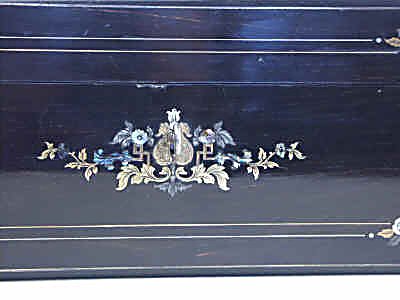
|
Detail: The elaborate escutcheon. The box has a working
lock and key. There is a mark in the ebony near the lock probably
caused by someone trying to force it open.
The inlaid brass and mother of
pearl are accented with further chiseled engraving: chasing.
The left side of the escutcheon
is a replacement.
|
|
| This box has been photographed
with a view to including it in a future edition of our book Antique
Boxes, Tea Caddies, and Society -- 1700--1880, ISBN:
0764316885 Antigone Clarke & Joseph O'Kelly, A
Schiffer Book for collectors. |
Detail: The inlay in the top features an inlay of birds with a
fountain. The natural colors and graining of the shell have been used to give the
composition life.
This is jewelry in wood.
The little cracks in the ebony
are usual in work of this date and type. "Restoration"
would be inappropriate and would result in loss of some of the
engraved detail. These are only veneer cracks and do not appear to
have structural consequence.
|
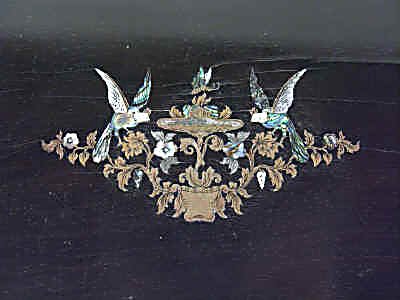
|
|
|
The writing tablet retains its
original embossed royal blue velvet writing surface.
|
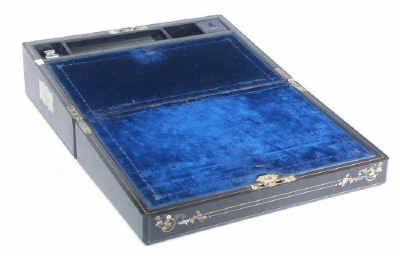
|
|
|
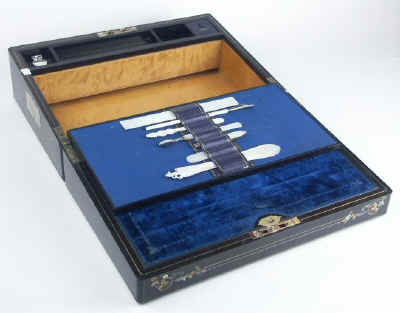
|
The box has compartments for pens and inkwell.
Inside it is veneered with satinwood.
The flap is lined with blue silk and has a mother of pearl calligraphy
set.
The satinwood is as the ebony
saw-cut. The secret drawer panel has a core of mahogany which is
veneered on all sides with satinwood which is about a millimeter
in thickness. This method of construction is ancient and uses all
the qualities of the materials to the best of advantage.
The mahogany is quarter sawn for
structural stability. The satinwood is cut to give the best
figure.
|
|
There are three solid ebony drawers hidden behind the
sprung satinwood panel.
The panel is released by pulling the division
next to the box for holding quill pens.
|
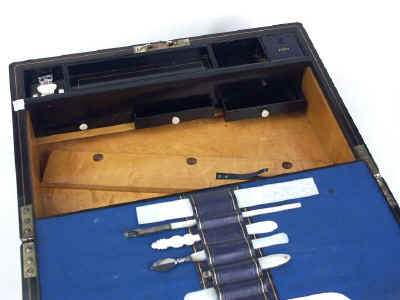
|
|
|
|
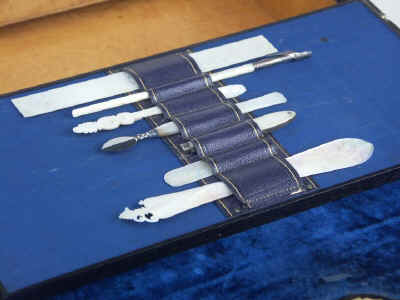
|
The calligraphy tools are of beautiful quality. The mother
of pearl ruler is engraved.
|
|
|
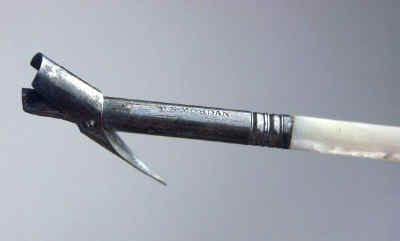
|
The quill pen holder is marked S. Morden who was one
of the most important pen makers in the 19th C.
|
|
|
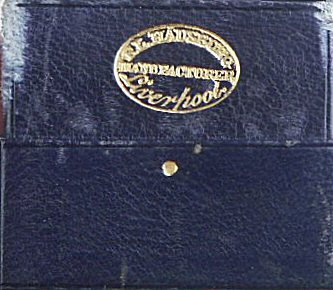
|
The lift out pen box is stamped "F.L. Hausburg,
Manufacturer Liverpool.
Hausburg is described on surviving
trade medallions as
F.L Hausburg
JEWELLERS
WATCHMAKERS
MANUFACTURERS
OF DESKS
DRESSING CASES
LAMPS
CHANDELIERS & O
On some medalions the name is given
as PROMOLI & HAUSBURG
Hausburg was an important manufacturer.
|
|
|
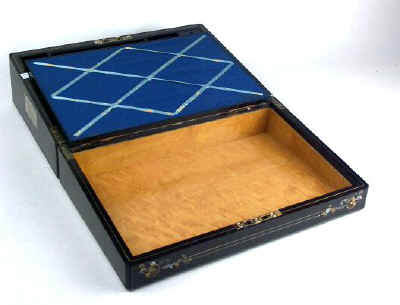
|
The underside of the flap is lined
with silk.
The inside of the box is beautifully
figured satinwood which contrasts dramatically with the dark ebony of
the outside.
|
|
|
Detail of one of the tools. I think
the sharp steel blade is designed for splitting quills.
|
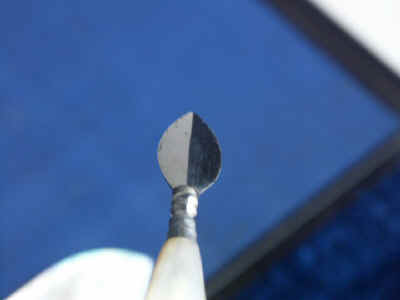
|
|
|
The inkwell has a silver-plated top
which has a special screw closure.
|
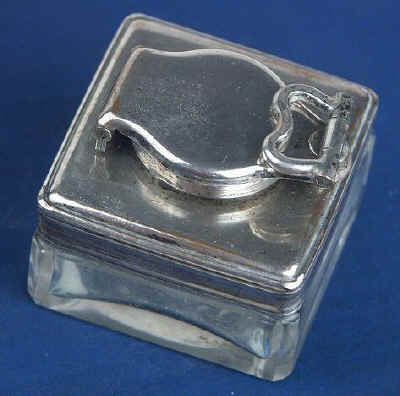
|
|
|
|
|













